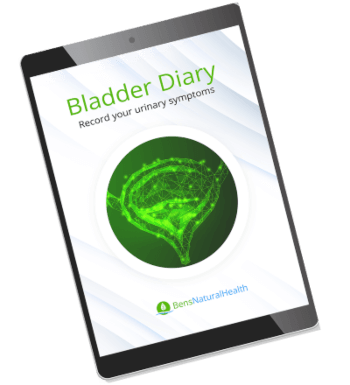- Q: What is considered a normal urine output, and why is it important to measure?
- Q: How do doctors define low urine output, and what are the signs I should watch for?
- Q: What urine output is considered too high, and what could this mean for my health?
- Q: How can I test or calculate my urine output at home?
- Q: What are the common reasons for abnormal urine output, either too much or too little?
- Q: What practical steps can I take to improve my urine output naturally?
- Q: How much liquid can a bladder hold, and does this impact normal urine output?
- Q: What percentage of the water we drink is passed as urine, and does all fluid make it to the bladder?
- FAQs to Better Understand Normal Urine Output and Maintain Kidney Health
- Conclusion
- Our Medical Review Process
- Our Editorial Guidelines
- Medical Disclaimer
- Source
Many factors can affect your urine output. People with severe kidney problems experience issues with their urine output. But that does not mean that everyone with a reduced urine output suffers from end-stage renal disease.
There are many factors we should evaluate before considering kidney problems. First and foremost, we should be aware of what a normal urine output is. This article will describe normal and abnormal urine output and what causes such variations. After reading, you will also know how to measure your urine output and what to do if you find abnormalities.
To ensure clinical accuracy and provide authoritative insights, we interviewed licensed medical doctor Dr. Alberto Parra regarding the topic of what is normal urine output.
Dr. Parra provided detailed responses to direct questions concerning normal urine output per hour, what is the normal urine output per day, and specific considerations for normal urine output for dialysis patients.
He also addressed age-specific concerns such as normal urine output in 24 hours, in 8 hours, and per day in elderly individuals. All statements and recommendations found in this article reflect Dr. Parra’s medical expertise and were developed through targeted interview questions designed to clarify these points for readers.
Furthermore, the content has been medically reviewed and is grounded in evidence-based, peer-reviewed sources to ensure the most up-to-date and reliable information is presented.
Q: What is considered a normal urine output, and why is it important to measure?
Dr. Parra answers: Normal urine output refers to the total volume of urine your body expels over a certain period, commonly measured in milliliters (ml) per hour or per 24 hours. This measurement is an essential indicator of kidney health and overall hydration status. For most healthy adults, the average urine output per day typically ranges from 800 to 2,000 milliliters, depending on daily fluid intake. However, these values can vary due to differences in age, diet, climate, medical history, and body weight according to medical textbooks.
A commonly accepted normal urine output per hour is between 0.5 and 1.5 cc/kg/hour. For example, if you weigh 70 kg, your healthy urine output standard would range from 35 to 105 ml each hour. This normal urine output range might change if you are extremely hydrated or experiencing dehydration. It’s also worth noting that the normal daily urine volume may be higher if you drink a lot of fluids or lower if you are dehydrated. The glomerular filtration rate, a measure of kidney function, works alongside these assessments to provide a complete picture of your renal health. All these factors are critical for understanding your expected urine output in a healthy person, supporting good fluid balance, and maintaining optimal kidney function.
Remember, how much urine you should pass in 24 hours largely depends on your fluid intake, but most people urinate at least every 6 hours, which is within the guidelines for normal urine output for adults.

Q: How do doctors define low urine output, and what are the signs I should watch for?
Dr. Parra answers: Low urine output, referred to medically as oliguria, occurs when the volume of urine you produce falls below established thresholds. According to clinical urine output guidelines, oliguria in adults is defined as producing less than 0.5 cc/kg/hour, which for most adults equates to less than 500 ml in 24 hours. The expected urine output in a healthy adult should not regularly fall below this mark. For children, it’s less than 0.5 cc/kg/hour, and for infants, less than 1.0 cc/kg/hour.
Another, more severe, condition is anuria, this means the kidneys are producing extremely low urine volumes, less than 100 ml per day in adults. If you notice you’re not urinating for over 9 hours or if your urge to urinate becomes infrequent, this should prompt concern. Most often, medical reviews mention that low urine output can be due to not drinking enough water, leading to dehydration. However, persistent oliguria warrants medical evaluation, as it could indicate a problem with your kidneys or urinary tract.
Mild dehydration is common; people sometimes forget to hydrate, unintentionally reducing their normal urine output per day, especially in the elderly or during illness. If you notice a substantial change in your urination habits or feel your normal urine output in 24 hours has decreased significantly, consult your doctor for further assessment.
Q: What urine output is considered too high, and what could this mean for my health?
Dr. Parra answers: Abnormally high urine output is referred to as polyuria. Unlike normal variations due to increased fluid intake, polyuria is diagnosed when an adult produces more than 3 liters of urine in 24 hours. In children, the threshold is 2 liters per square meter of body surface area per day.
It’s important to differentiate between frequent urination (urinating often but not necessarily high volumes) and polyuria (producing large volumes). Conditions like benign prostatic hyperplasia and prostate cancer may cause increased urinary frequency without raising the overall daily urine volume. Similarly, conditions like nocturia or an overactive bladder may increase trips to the bathroom but not the normal urine output per day.
If your urine output drastically exceeds standard levels, especially if accompanied by symptoms like excessive thirst, unexplained weight loss, or fatigue, it is wise to seek evaluation, as this may be linked to underlying health conditions such as uncontrolled diabetes or hormonal imbalances.

Q: How can I test or calculate my urine output at home?
Dr. Parra answers: Checking your urine output at home is straightforward and can provide valuable insight into your kidney health. The most accurate way is to perform a 24-hour urine test. You’ll need a special urine collection container, which you can find at most pharmacies, or a urine collection bag marked with volume measurements. Here’s how to do it, according to a study guide from StatsPearls Publishing:
Begin the test by emptying your bladder when you wake up in the morning (discard this initial urine), then collect all subsequent urine for the next 24 hours in the container. Record the time you started, and finish by including your first urine sample the following morning. For best results, keep a record of your fluid intake, ideally aiming for about 2 liters throughout the day or as directed by your healthcare provider.
To determine your normal urine output in 24 hours, simply measure the total volume collected. Divide this by 24 to calculate the normal urine output per hour. A healthy adult should pass more than 500 ml and less than 3,000 ml in a day. If your measurements consistently fall outside expected values, consult with your physician who may recommend further testing to evaluate kidney function or possible causes of abnormal urine output.
Q: What are the common reasons for abnormal urine output, either too much or too little?
Dr. Parra answers: Urine output that falls outside of healthy urine output standards can indicate a variety of health issues. Common causes for low urine output (oliguria) include:
- Dehydration: Inadequate fluid intake limits your kidneys’ ability to produce urine, decreasing your normal urine output per day.
- Kidney disease: Dysfunctional nephrons reduce both the glomerular filtration rate and urine output, potentially leading to kidney failure if severe.
- Cardiovascular problems: Heart conditions like congestive heart failure can decrease blood flow to the kidneys, lowering urine production.
- Urinary tract obstruction: Kidney stones or anatomical anomalies may block urine flow, occasionally resulting in medical emergencies.
Conversely, polyuria (excessive urine output) can be triggered by:
- Alcohol, caffeine, or use of diuretics: These substances increase urine production by stimulating kidney function.
Uncontrolled diabetes mellitus: High blood sugar levels lead to increased urine glucose, causing your body to expel more water through the urine. Research indicates that blood sugar management is crucial for maintaining normal urine output.

Q: What practical steps can I take to improve my urine output naturally?
Dr. Parra answers: Supporting healthy urine output is often simple and natural:
Drink more water
The most effective way to ensure normal urine output per hour is by maintaining good hydration habits. Aim for at least eight glasses of water daily to prevent dehydration and keep your kidneys functioning optimally. Adequate fluid intake not only preserves your normal urine output in 8 hours but also helps flush toxins and support overall metabolic processes.
Exercise regularly
Studies show that regular physical activity increases your heart rate and encourages greater blood flow to your kidneys, which can naturally enhance urine output.
Besides these, incorporating natural diuretics (like pineapple and green tea) or prescribed diuretic medications, if suitable, could assist, though any medication should always be used under a doctor’s guidance to avoid possible side effects.
Always consult your physician before making significant lifestyle or medication changes, especially if you have underlying health conditions such as chronic kidney disease or are a dialysis patient, where normal urine output for dialysis patients may differ significantly from the general population.
Q: How much liquid can a bladder hold, and does this impact normal urine output?
Dr. Parra answers: In a healthy adult, the bladder typically holds between 300 and 700 milliliters (ml) of urine, with an average around 450 ml. Women tend to have slightly smaller bladders (400–500 ml) compared to men. Bladder capacity can be reduced by outside factors, such as pregnancy or an enlarged prostate (benign prostatic hyperplasia), and internal factors, such as a urinary tract infection or an overactive bladder. Although bladder capacity may influence how often you urinate, it does not directly alter the total normal urine output per day, which depends more on fluid intake, kidney function, and overall health.
Get your FREE bladder diary
- Daily bladder diary
- Better understand your urinary symptoms
- Step-by-step guide
Q: What percentage of the water we drink is passed as urine, and does all fluid make it to the bladder?
Dr. Parra answers: Not all of the water you consume is expelled as urine. A portion of what you drink replaces normal fluid losses (such as via perspiration, breathing, and stool), these can total around 800 ml per day, according to medical textbooks. Remaining fluids are used in metabolic processes and, in some cases, become temporarily stored in soft tissue. What’s left is filtered by your kidneys and eliminated in the urine. For most people with healthy kidneys, excess water is effectively removed to maintain fluid balance and support bodily functions. This process helps ensure your normal daily urine volume stays within recommended ranges, aiding your body’s natural detoxification and hydration systems.
This is why it’s vital to stay hydrated, even if you don’t feel thirsty, in order to support your body’s metabolic needs and maintain healthy urine output levels by age and condition.
FAQs to Better Understand Normal Urine Output and Maintain Kidney Health
Q: What is the normal urine output for dialysis patients, and how does it differ from healthy individuals?
Dr. Parra answers: Healthy patients typically have a urine output of 800 to 2,000 milliliters per day. This range depends on hydration levels, activity, diet, weather, and other external factors. In contrast, patients undergoing dialysis require this procedure because they have kidney dysfunction. Their urine output is very low, and sometimes they may not produce any urine at all, as noted in medical reviews.
A patient with kidney dysfunction does not effectively eliminate urine and waste, resulting in an imbalance between fluid intake and elimination. As a result, their urine output decreases as the disease advances. Patients on hemodialysis produce so little urine that it becomes impossible for the body to effectively remove waste materials and toxins, making this procedure necessary to eliminate harmful substances. They may produce as little as 100 milliliters of urine daily, or none at all, compared to the normal output of 800 milliliters or more. This condition is called anuria and indicates severe kidney failure.
Some patients receiving hemodialysis still urinate, but only 300 to 700 milliliters a day, a condition known as oliguria. These patients can better control waste products, but they still require the procedure because it does not remove enough waste to maintain proper balance.
Q: Are there standard values for normal urine output in 8 hours for adults and older adults?
Dr. Parra answers: Actually, many professionals prefer measuring urine output over shorter periods, rather than over 24 hours. Checking urine output for 8 hours is simpler to do, and there are standard values to reference. A healthy adult typically eliminates 0.5 to 1.5 milliliters per kilogram of body weight each hour. For an average adult weighing 70 kilograms, this amounts to 280 to 840 milliliters of urine in an 8-hour period.
According to a review published in the journal Nephron, 6 hours are used more frequently than 8 hours and 24 hours to diagnose patients with oliguria, with a minimum threshold of 0.5 milliliters per kilogram per hour. Anything below this suggests a high likelihood of issues with kidney perfusion and function. It can also indicate dehydration, low blood pressure, or systemic problems that need assessment. We should also consider differences between adults and older adults, who often experience changes in urine output due to chronic illnesses and medications such as diuretics.
Additionally, physical signs like urine color, frequency, and symptoms such as confusion and swelling in the lower extremities are important. These signs can reveal problems with urine output and sometimes provide more information than just numbers alone.
Q: How do urine output levels by age compare for children, adults, and seniors?
Dr. Parra answers: At different stages of life, urinary output levels change based on the blood flow to the kidneys, the amount of waste materials the body needs to eliminate, and any health conditions or medications that may affect kidney function. Generally, we observe a decrease in urinary output as we age. The highest levels are observed in neonates and infants, then they stabilize during adulthood and may decline slightly in seniors.
Studies indicate that the highest urine output occurs about 10 days after birth. Neonates can produce 4 to 6 mL of urine per kilogram per hour during their diuresis phase. Afterward, the rate decreases to between 1 and 2 milliliters per kilogram per hour in infants. This means that a 10 kg toddler would produce roughly 10-20 milliliters of urine each hour. This elevated urine output is due to faster kidney metabolism during the early years and more rapid fluid exchange caused by cardiovascular differences across life stages.
As we age, urine output stabilizes, reaching the typical adult level of 0.5 to 1.5 milliliters per kilogram per hour. As noted earlier, seniors may have slightly lower urine output, but if their kidneys are functioning normally, it should not fall below the threshold of 0.5 milliliters per kilogram per hour.
Q: Can normal urine output guidelines help detect early kidney issues even if other symptoms are not obvious?
Dr. Parra answers: Symptoms only begin to appear when kidney disease has significantly advanced and starts affecting body systems. Before that, early kidney issues can be detected by measuring various parameters, including urine output and creatinine levels. While many might assume that creatinine measurements are more important, reliable, and sensitive than urine output, clinical research shows that measuring urine output in critically ill patients is equally effective and sometimes even more effective than measuring creatinine levels alone. Therefore, urine output can serve as a reliable indicator of kidney issues, even when other signs and symptoms are unclear.
For critically ill patients, the clinical study mentioned above recommends measuring urine output hourly. When values fall below 0.5 milliliters per kilogram per hour and stay there for six hours, it raises significant concern for early acute kidney injury. These changes often occur before creatinine levels increase, and urine output criteria can identify acute kidney injury up to 46 hours earlier than elevations in creatinine. Additionally, a recent systematic review of 50 clinical studies demonstrated that urine output can be superior to creatinine alone in detecting kidney damage, improving detection rates from 21% to 36%. Early detection through urine output is associated with better outcomes and lower mortality risk.
Q: Is there an expected urine output in a healthy person when experiencing a fever or illness?
Dr. Parra answers: Fever can alter certain cardiovascular measures, which can indirectly affect urine output, but not enough to fall below the normal threshold for a healthy adult. Fever increases insensible fluid losses through sweating and increased breathing rate. Sometimes, this can lead to mild dehydration if you don’t drink enough fluids to replace what you lose. When fluid levels in the body decrease, blood flow through the kidneys diminishes, leading to reduced urine production.
In practical terms, you might notice darker, more concentrated urine and a lower volume if you have a fever or are ill. However, this does not necessarily indicate a kidney problem. It simply signals that you need to hydrate more. The lower limit for urine output is 0.5 milliliters per kilogram per hour; maintaining a urine output above this level indicates acceptable hydration levels. Still, individuals with a susceptibility to kidney issues and fever may approach this lower threshold.
If you observe persistent low urine output despite drinking fluids, it could indicate another complication or significant fluid loss. Pay attention to other signs, such as dizziness, dry mouth, or confusion, and report these symptoms to your doctor if they accompany low urine output. Infections elevate body temperature and may affect your urinary tract or kidneys, altering urine output and causing pain during urination.
Conclusion
Understanding what is normal urine output can help you feel confident about your kidney health and know when to seek advice. Everyone’s body is unique, and urine amounts can change a little from day to day based on things like age, fluid intake, and health conditions.
Generally, passing a comfortable amount of urine each day, without sudden changes, is a good sign your kidneys are working well. If you ever notice a significant shift, either much more or less urine than usual, or if there’s anything else unusual, it’s always wise to check in with your healthcare provider.
Remember, paying attention to your normal urine output is one simple but important way to help protect your kidneys and overall well-being. If you have any questions or concerns about your urine habits or kidney health, you are not alone, your healthcare team is there to support you.
Our Medical Review Process
At Ben’s Natural Health, we put clear, transparent, and scientifically sound information first. All articles are authored by healthcare experts and undergo a thorough review every 12 to 24 months to guarantee accuracy, reliability, and alignment with the latest scientific findings. We rely exclusively on reputable, peer-reviewed studies published in leading medical journals. Each article includes complete citations and links, so you can verify the information’s authenticity. Discover more about how we fact-check our content by visiting our medical review process.
Our Editorial Guidelines
For over 25 years, Ben’s Natural Health has delivered trusted natural health information guided by strict editorial standards. Our policies ensure accuracy, objectivity, and scientific reliability in all our communications. Each article is crafted by certified medical professionals—including doctors, registered dietitians, nutritionists, trainers, or surgeons—and is subject to independent expert review. You’ll always find contributors’ credentials, expertise, and detailed biographies clearly displayed and linked at the top of every article. To understand our writing and verification process in depth, review our comprehensive editorial guidelines.
Medical Disclaimer
The material on this blog is intended for informational use only and should not replace medical advice, diagnosis, or treatment from a professional. Although content is produced by licensed doctors and thoroughly medically reviewed, it is not to be considered personalized medical advice. For any health concerns, you should always consult your physician or a qualified healthcare provider. Please do not ignore or postpone medical consultation based on information you find here. Any action you take upon the information from this blog is strictly at your own discretion.







